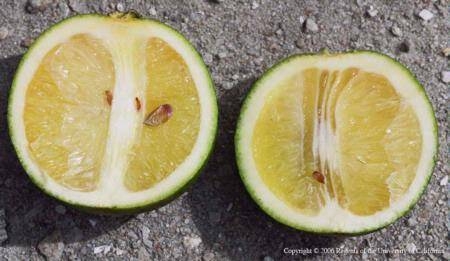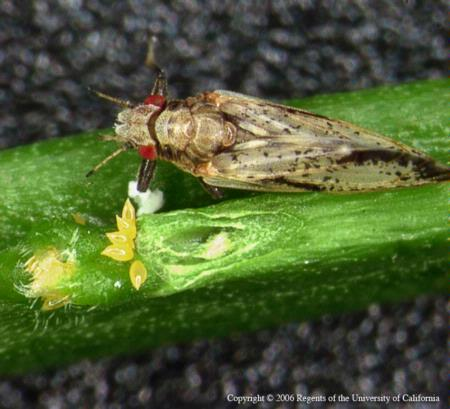- Author: Chris M. Webb
California faces many complex challenges in the future. California must address these challenges to ensure a high quality of life, a healthy environment, and economic success for future generations.
The University of California Division of Agriculture and Natural Resource ( UC ANR), a statewide network of UC researchers and educators dedicated to the creation, development, and application of knowledge in agricultural, natural, and human resources, recently released a Strategic Vision recognizing that California’s future depends on
- sustainable, nutritious, and safe food;
- clean, healthy, and sustainable places to live, work, and grow;
- resilient, biologically diverse, and healthy ecosystems;
- clean, secure, and sufficient supplies of water;
- cleaner and more secure energy;
- educated and engaged people; leaders prepared for and capable of making strategic decisions;
- innovative solutions and informed choices;
- economic opportunity and jobs.
The Strategic Vision identifies nine strategic initiatives as a start to address the challenges that face Californians. The following multidisciplinary, integrated initiatives represent the best opportunities for ANR’s considerable infrastructure and talent to seek new resources and new partnerships within and outside UC to find solutions for California.
The conceptual initiatives are:
1. Improve Water Quality, Quantity, and Security. Water is the life blood of California’s economy. As such, water supply and quality for agricultural, urban, and environmental systems is a critical issue facing the state over the next 20 years and beyond.
2. Enhance Competitive, Sustainable Food Systems. California agricultural competitiveness will depend upon adopting new scientific and technological innovations derived from new knowledge in agriculture and nutrition.
3. Increase Science Literacy in Natural Resources, Agriculture, and Nutrition. California is undergoing a remarkable social transformation driven by two forces that have shaped the state throughout history: dramatic demographic changes in the number, age, and diversity of the population and the impact of science and technology. Education will be a key contributor to the successful outcome of this transformation, providing the principal means of making informed decisions about complex issues.
4. Sustainable Natural Ecosystems. Population growth, coupled with climate and land use changes, are the most important issues that will affect California’s natural resources. Future urban and suburban growth is projected to shift more toward rangelands and forests.
5. Enhance the Health of Californians and California’s Agricultural Economy.
Improving the health of Californians, enhancing their quality of life, and reducing health care costs are critical to the future of California.
6. Healthy Families and Communities. The major challenge for our families, schools, and communities is to promote positive development of children, youth, and adults.
7. Ensure Safe and Secure Food Supplies. Food-borne illnesses affect one in four Americans annually, with higher rates in California. Food-borne illnesses place a burden on our health care system and reduce the productivity of our workforce. Food insecurity, which currently affects one in ten California households, places additional burdens on our health care system as poor nutrition is directly related to numerous human diseases and increased health care costs.
8. Manage Endemic and Invasive Pests and Diseases. Increases in the number and kinds of pests and diseases may negatively impact California agriculture, natural resources productivity, and ecosystem functions, affecting Californians’ quality of life.
9. Improve Energy Security and Green Technologies. California faces diminishing and more costly supplies of energy, which can be addressed in part by California’s vast agricultural and natural resource base.
The Ventura County UCCE office is already working on several of these initiatives that are within our area of expertise. Throughout the state, many other dedicated scientists, researchers, and program representatives are also working hard today for the future.
- Author: Chris M. Webb
In 1823, Florida became the first state to plant a commercial citrus grove. The industry and its challenges spread across the southern states of Louisiana, Texas, Arizona and California. Because these areas include many international ports of entry, because of their proximity to international borders and because of their favorable climate, the risk of introduction and establishment of invasive pests and diseases is heightened. In recent years Florida has returned to its status of first in the US: unfortunately Florida has been the first to be hit by many of the potentially disastrous pests facing the citrus industry.
The Asian Citrus Psyllid (ACP), carrier of huanglongbing (HLB) (also known as citrus greening disease), was first discovered in Florida in June of 1998. (See previous blog post “An introduction to the Asian Citrus Psyllid” for details on the insect and disease.)The discovered psyllid tested negative for HLB. At that time the industry in Florida was attempting to eradicate another disease, citrus canker. Some people were unhappy with the aggressive battle against citrus canker, however, and in November 2000, an injunction on inspections and eradication was implemented in Broward County, which may be when and where the Florida HLB epidemic began.
In October 2005, HLB was known to exist in two counties. By the time it was discovered, however, the problem was well established. By August 2008, 32 counties were infected.
In late 2005 and early 2006 key citrus stakeholders formed the Citrus Health Response Program (CHRP). This organization’s focus is a holistic approach to protecting the industry: developing and implementing minimum standards for inspection, regulatory oversight, disease management, and education and training. The goals are developed by five sub-working groups:
- Nursery and Budwood Working Group
- Production Practices Working Group
- Packing Working Group
- Processing Working Group
- Harvesting Working Group
- Residential Citrus Working Group
Common themes within CHRP are:
- The need for education and training, research, and a balance of regulatory oversight with industry due diligence
- Flexibility in adjusting to new information
- Requirements that are based on sound science and the principles of plant quarantine
It is important that we in California and other citrus-producing states learn from the hard lessons Florida is experiencing. The ACP has already been found in our state. Although HLB has not yet been detected, our response must also be organized, science-based, and flexible to sustain an important California industry.

- Author: Chris M. Webb
We hear often of exotics pests and invasive species. We know that plants, pests and disease can spread in many ways. We also know new problems arrive regularly – seemingly with increasing speed.
In the Ventura County UCCE office people often show up with samples of soil, plants, and insects. We would like to take this opportunity to remind people that moving these, and related items, across geographical borders (countries, states and counties) often require permits. Permits may even be required when working with government agencies. Not obtaining a permit when required can lead to unpleasant consequences including: regulatory action, fines, or loss of research funding.
To help protect yourself and reduce the spread of exotic and invasive species, please do not move samples across geographical borders without checking if a permit is required. UC ANR Safety Note #146, “Quarantined and Regulated Pest Permit Requirements” can help. It can be found at http://groups.ucanr.org/ehs/files/68310.pdf.
Other UC ANR safety topics can be found at http://groups.ucanr.org/ehs/Safety_Notes/.
- Author: Chris M. Webb

The tiny Asian citrus psyllid (ACP) has the potential to wipe out the California citrus industry. It is a carrier of the deadly bacterial plant disease, Huanglongbing (HLB), which is also known as citrus greening disease. This disease is fatal to citrus trees.
The insect feeds on citrus leaves and stems. Unfortunately, ACP has already been found at several sites in California. It threatens not only the commercial citrus industry, but also the ability of California residents to grow citrus at their homes.
It can take years for the symptoms of HLB to appear. Inspection and elimination of ACP is our first line of defense. Signs of disease include: asymmetrical yellowing and splotching of leaves; new growth is misshapen and twisted; produces bitter, inedible, misshapen fruit.
To help stop the spread of this insect and disease: inspect trees monthly and whenever watering, spraying, pruning or tending to trees; plant only certified disease-free citrus trees from a reputable nursery; do not bring any plant material into California from other states or countries.
At the end of this post you will find a presentation from the Citrus Research Board, provides additional information and photos. Topics covered include: other plants that can be attacked by the psyllid; maps showing locations of pest and disease; ways that the pest moves around; what happens when ACP is detected; how an infestation affects commercial citrus orchards.
If you find the Asian citrus psyliid, call the CDFA hotline at 800.491.1899 right away.
To learn more about the Asian citrus psyllid and HLB disease, or to download printed materials in English, Spanish and Chinese, please visit www.californiacitrusthreat.com.
- Author: Chris M. Webb
Ventura has a new pest, the cherry vinegar fly, Drosophila suzukii. This pest goes after not just cherries, but raspberries, strawberries, blueberries and blackberries. It has been in the Central Valley and along the coast for over a year now and is a serious pest. Background information and an outline for likely management practices can be found on UC ANR's Strawberry and Caneberry blog. Color photos of the pest and damage caused along with lifecycle information can be found here.
Rose Hayden-Smith, our UCCE County Director, learned about the pest from Agricultural Commissioner Henry Gonzalez at a recent Farm Bureau meeting. She told Jim Downer, a Farm Advisor in our office, who grows berries at his home. Jim commented that he had seen a possible suspect on his fruit. Jim submitted the infested blackberry fruit into the County of Ventura Ag Commissioner and his suspicions were confirmed. In addition our Farm Advisors have been hearing reports from raspberry and blueberry growers about the effect of the flies on fruit.
Stay tuned for more information as it becomes available.



